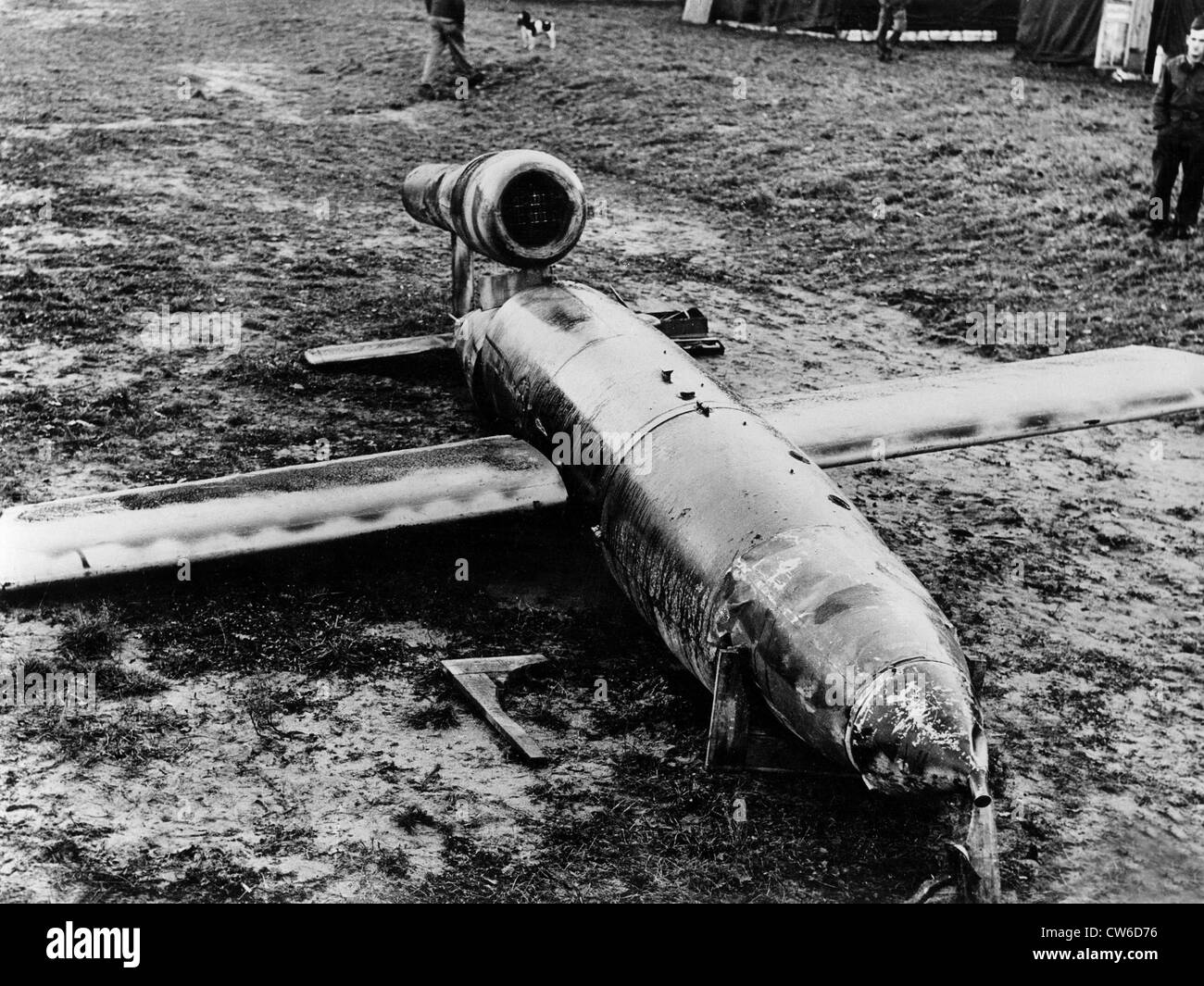
V 1 flying bomb hires stock photography and images Alamy
V-1 Flying Bomb. The V-1 flying bomb or Vergeltungswaffen-1 ("Vengeance Weapon 1") as it was known by the Germans, was the world's first successful and practical cruise missile. While the V-1's time in the war was short-lived, the technology used was very important and help further the development of the missiles and aviation of today.
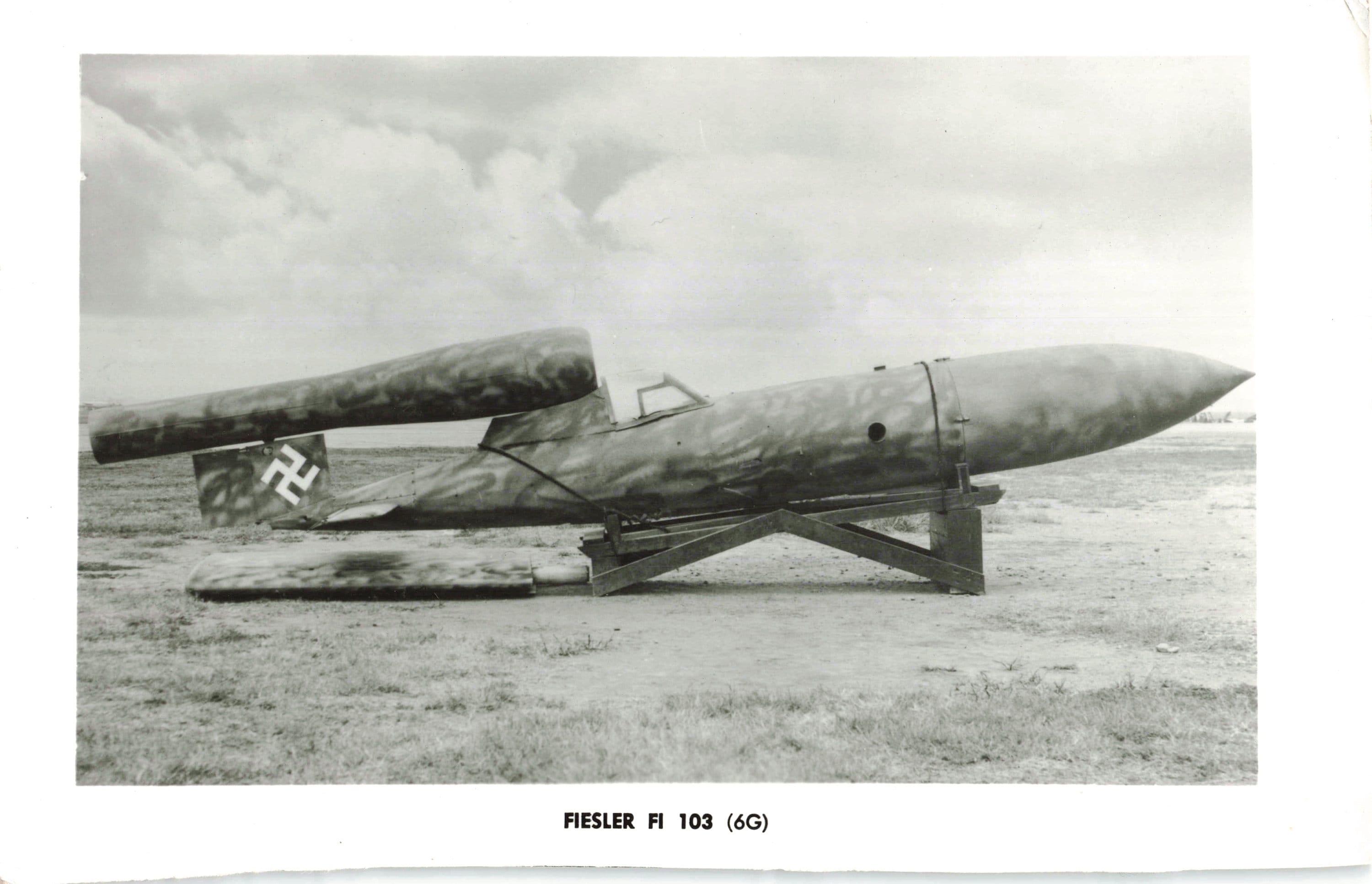
Fieseler Fi 103R Reichenberg German V1 Flying Bomb Military Etsy
The V-1 was history's first mass-produced cruise missile. Each could carry a 1-ton warhead nearly 250 km (160 miles) at a cruising speed of 650 km/h (400 mph). A V-1 falls onto London. (Image source: WikiCommons.) Rain of Terror Nearly 10,000 V-1s were launched from sites in Northern France over an 80-day period beginning in June 1944.
V1 Flying Bomb, nicknamed “Doodlebug” by the allies, at the Imperial War Museum, London r
The only warning of an imminent V-1 strike came when a cutoff sequence killed the noisy engine of the "buzz bomb" seconds before impact. (Illustration by Jim Laurier, from V-1 Flying Bomb, 1942-52 (New Vanguard No. 106), by Steven J. Zaloga (Osprey Publishing, Bloomsbury Press Publishing)) Posted in Weapons & Gear Manual The V-1 Flying Bomb Was the First of Adolf Hitler's 'Retaliatory.
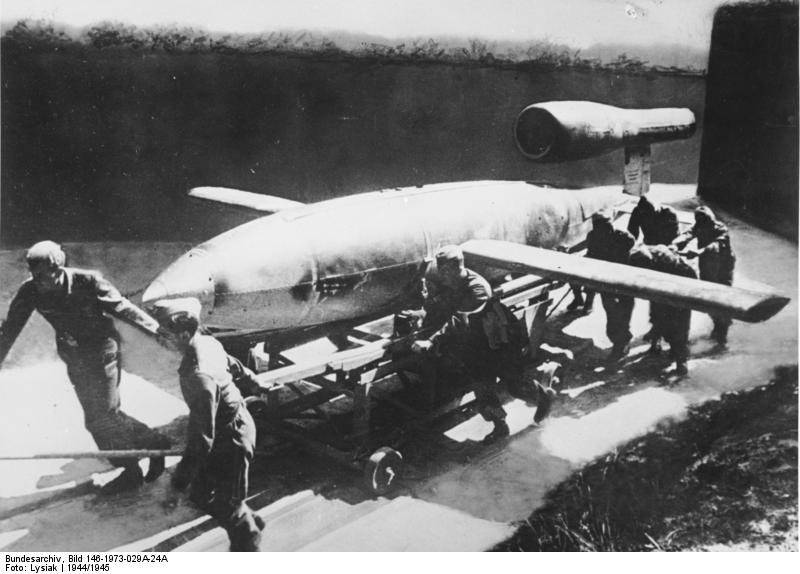
The V1 flying bomb All About History
The V-1 flying bomb ( German: Vergeltungswaffe 1 "Vengeance Weapon 1") was an early cruise missile. Its official Reich Aviation Ministry ( RLM) designation was Fi 103. It was also known to the Allies as the buzz bomb or doodlebug and in Germany as Kirschkern ( cherry stone) or Maikäfer ( maybug ). The V-1 was the first of the Vergeltungswaffen.

The German V1 flying bomb. WW2 Gravestone
V-1 flying bomb facilities To carry out the planned V-1 "flying bomb" attacks on the United Kingdom, Germany built a number of military installations including launching sites and depots. Some of the installations were huge concrete fortifications.
:max_bytes(150000):strip_icc()/Fieseler_Fi103_debajo_de_un_Heinkel_111-5c2d162b46e0fb00014d44d4.jpg)
V1 Flying Bomb in World War II
The V-1 guidance system used a simple autopilot to regulate height and speed. A weighted pendulum system provided fore-and-aft attitude measurement to control pitch (damped by a gyromagnetic compass, which it also stabilized).

A German World War Two V1 "Flying Bomb" doodlebug at the Eden Camp Museum, North Yorkshire Stock
The newest video in our ongoing investigation series into why Adolf was so obsessed with putting the letter V in front of the names of his scariest murder to.
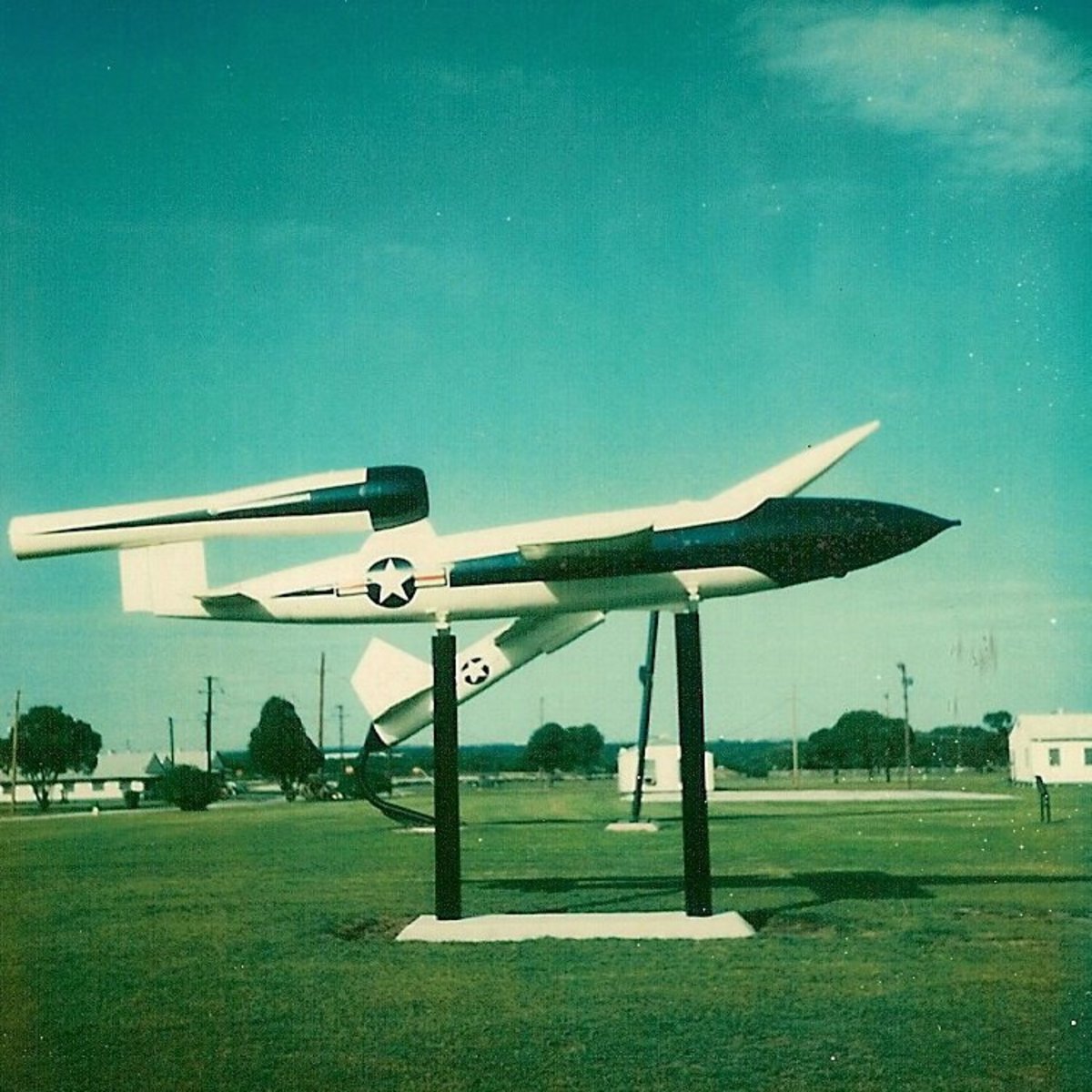
The V1 Flying Bomb The First Cruise Missile HubPages
The V-1 flying bomb ( German: Vergeltungswaffe 1 "Vengeance Weapon 1" [a]) was an early cruise missile. Its official Reich Aviation Ministry ( RLM) designation was Fi 103 [3] and its suggestive name was Höllenhund ( hellhound ).

V1 FLYING BOMB (FRA 100869)
The V-1 flying bomb was developed by Germany during World War II (1939-1945) as a vengeance weapon and was an early unguided cruise missile. Tested at Peenemünde-West facility, the V-1 was the only production aircraft to utilize a pulsejet for its power plant.
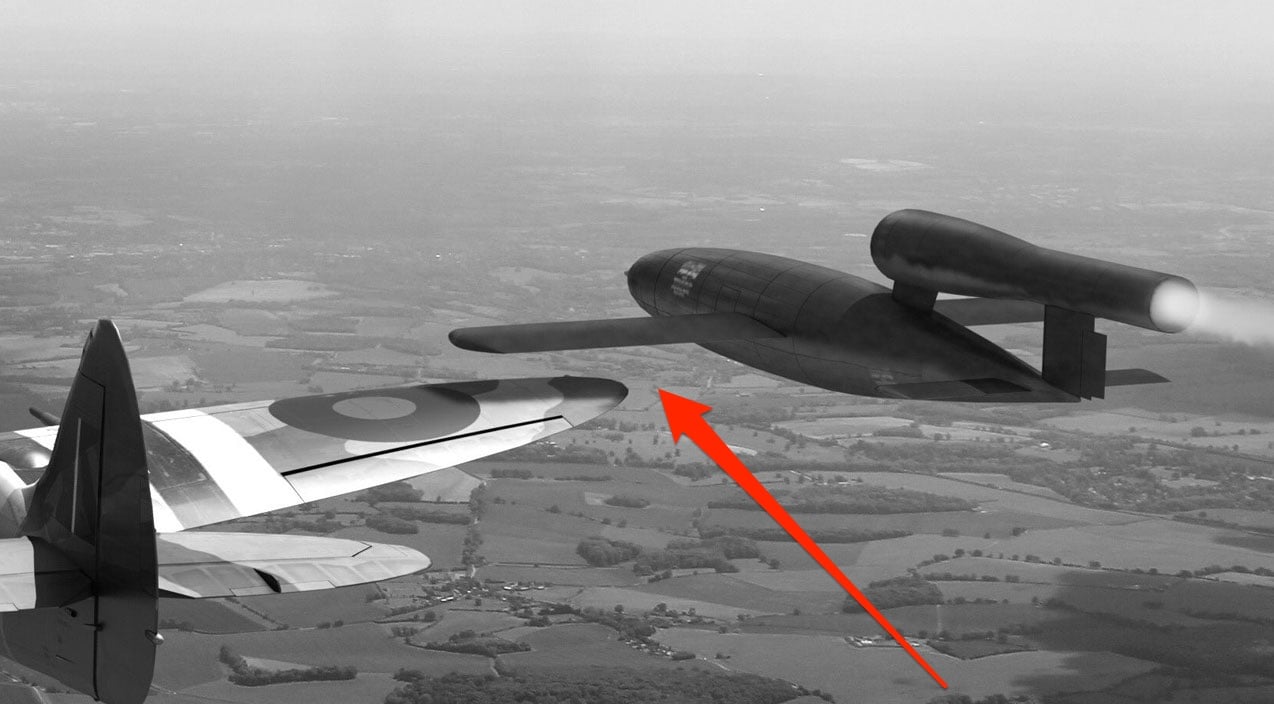
V1 Flying Bomb Just Discovered In British Forest After 74 Years World War Wings
In 1944, Nazi Germany launched the V1s against the UK. The V1 was a pilotless, jet-propelled flying bomb - the first of its kind in the world and a precursor to the modern cruise missile.
:max_bytes(150000):strip_icc()/v-1-large-56a61bd33df78cf7728b61a8.jpg)
V1 Flying Bomb in World War II
A fearsome terror weapon The V1 Flying Bomb, also known as a 'buzz bomb' or 'doodlebug', was one of the most fear-inducing terror weapons of the Second World War. In the face of relentless Allied bombing of German cities, Hitler created its 'revenge weapons' (Vergeltungswaffen) in an attempt to terrorise British civilians and undermine morale.

Flying Bomb V1 Op vliegveld 1944 Tweede wereldoorlog, Wereldoorlog, Vliegtuig
In 1942, the Luftwaffe, aware of the development of a long-range rocket by the German army, began intensive development of a rival weapon, a ramjet Flying Bo.
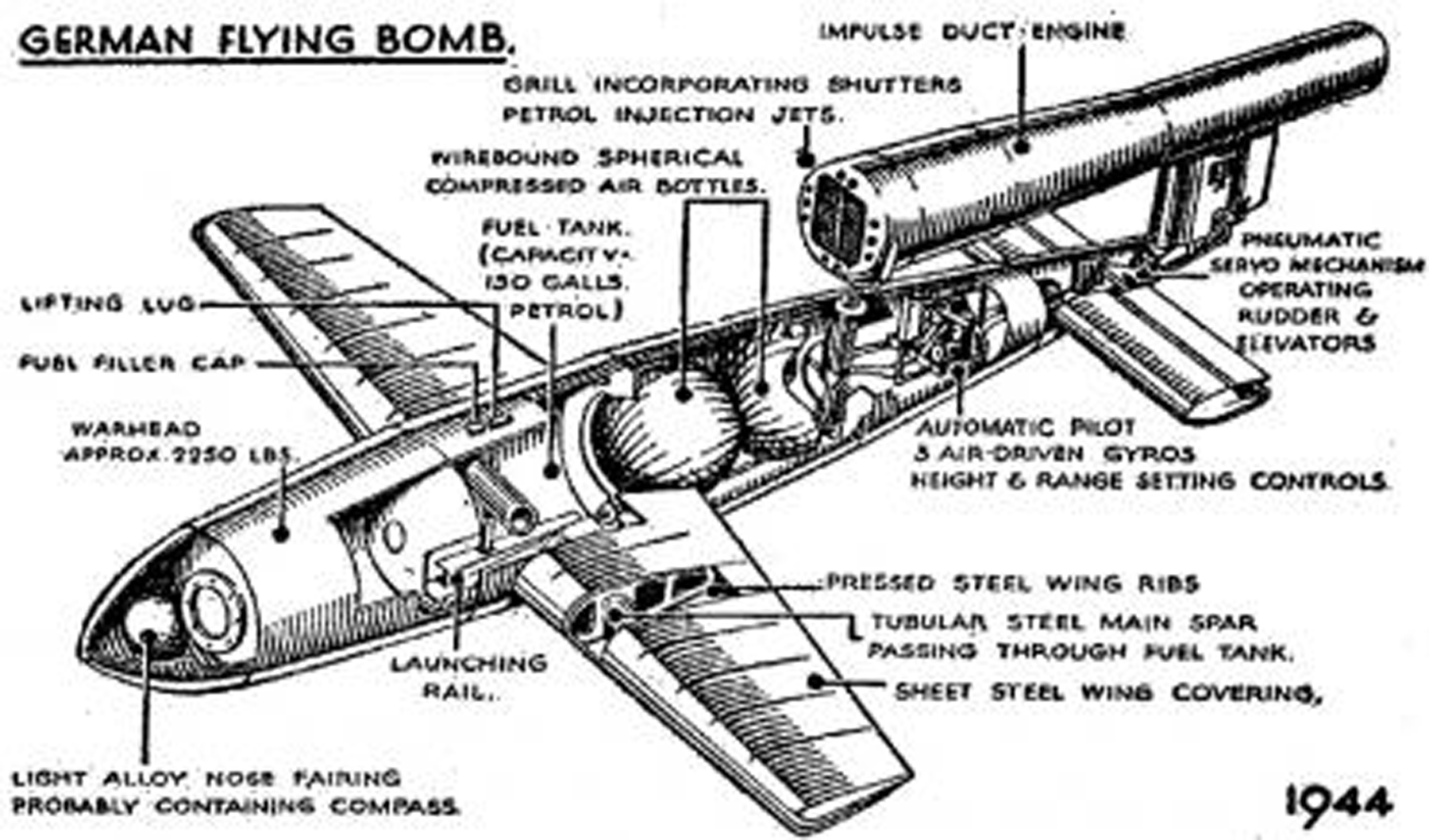
The V1 Flying Bomb Blog
The Fieseler Fi 103R, code-named Reichenberg, was a German manned version of the V-1 flying bomb (more correctly known as the Fieseler Fi 103 ). It was developed towards the end of the Second World War and was intended to be used as a human-guided bomb in likely-suicidal attacks against the advancing Allies.
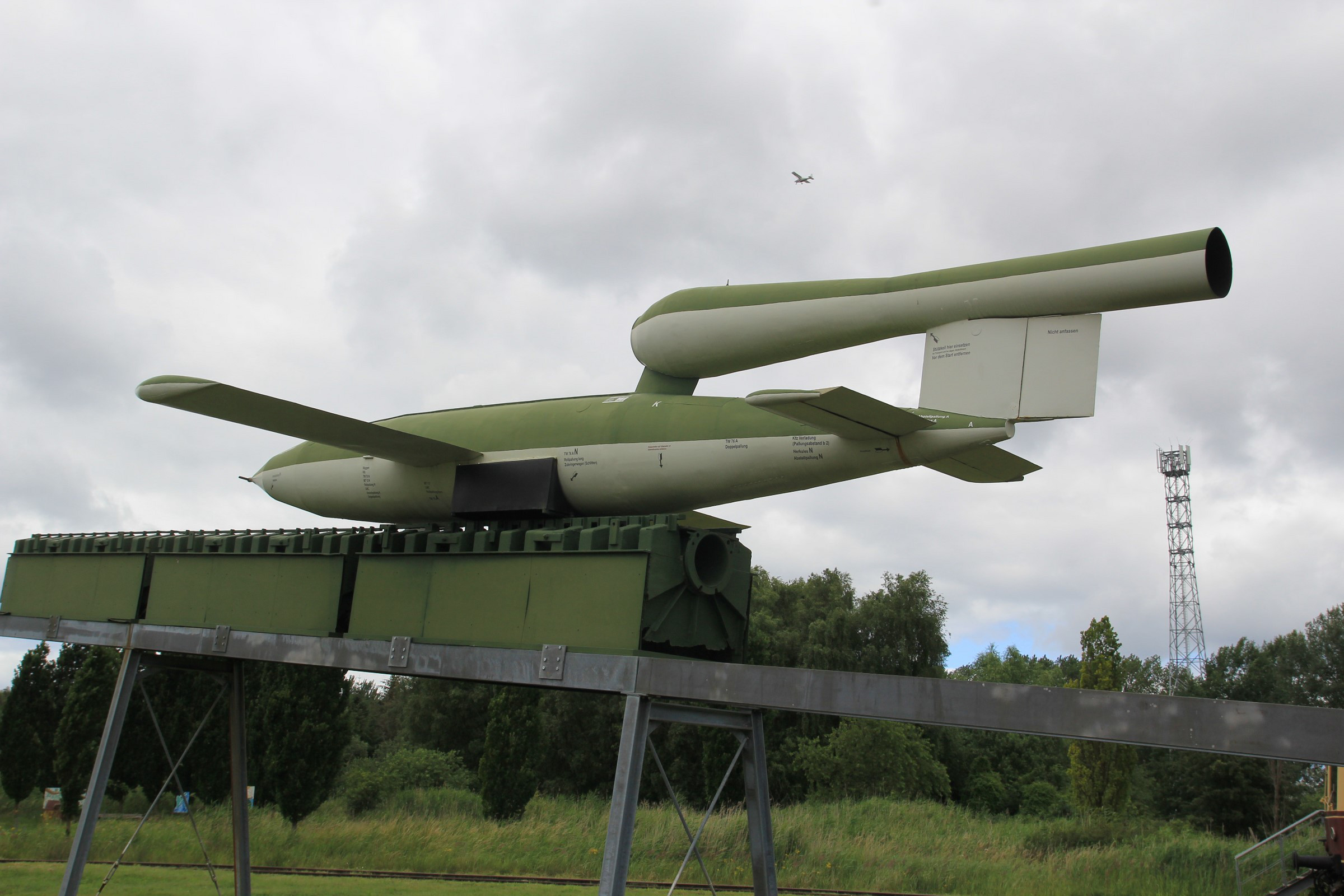
V1 Flying Bomb Photo
On the evening of Thursday, June 16th. 1944, our next duty day after the sighting of the first V1 flying bomb to reach London proper, we went to bed wondering about what "Sparrow" had told us.

"Flying Bomb (V1) (Kent & Sussex Courier Photograph)" by Brunoboy Redbubble
11th June 2019 at 12:58pm A Royal Air Force Wing Commander has described how Second World War Spitfire pilots might have used their airborne skills to tip V1 Flying Bombs out of the sky to bring them down.
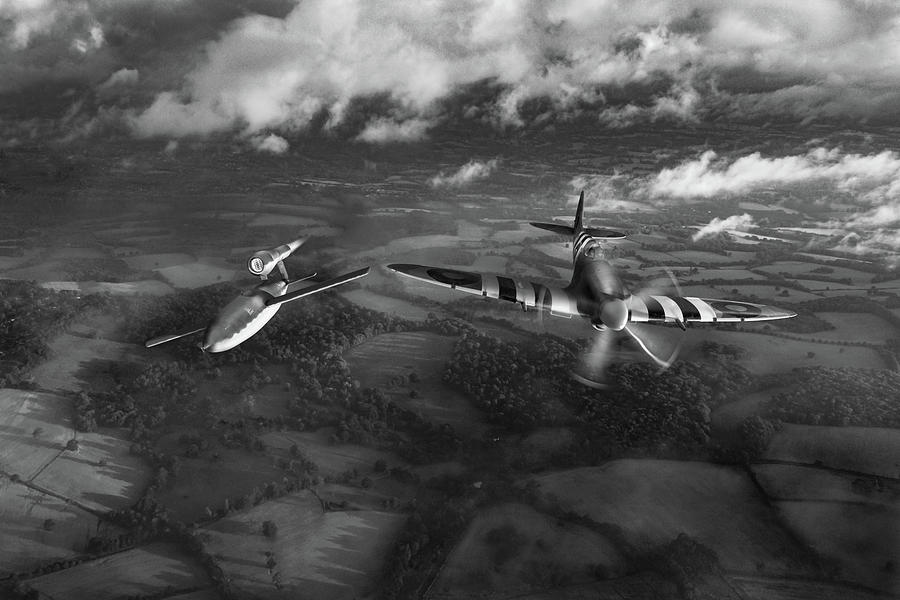
Spitfire tipping V1 flying bomb BW version Photograph by Gary Eason
By Logan Nye Apr 29, 2020 1 minute read SUMMARY One week after D-Day, Germany began launching a new, secret weapon at London. The distinctive roar of V-1 flying bombs would slowly fill the air and then suddenly cut out, followed shortly by the massive explosion as a warhead went off. Dozens would…